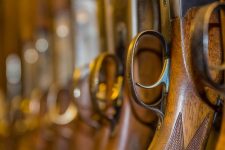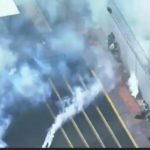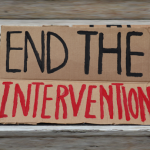Recent Report Triggers Debate About Gun Control Laws

Date published: 16 October 2017
Stephen Paddock killed 58 people and injured close to 500, when he opened fire on a crowd at a country music festival in Las Vegas on October 1. The gunman had a huge arsenal of high-power firearms in his hotel room, from where he randomly shot his unsuspecting victims.
It was the worst mass shooting in recent American history. In the wake of the tragedy, the focus has once again turned to the relaxed gun laws in the US, and the debate about whether there should be tighter restrictions.
Australian guns laws are seen abroad as an example of the effectiveness of strict gun control laws, with gun control advocates pointing to the fact there have been no mass shootings on a similar scale to the Port Arthur massacre since their introduction just over 20 year ago.
The Port Arthur massacre was the worst mass shooting the nation has ever seen. On 28 April 1996, Martin Bryant killed 35 people and injured 23 more.
The tragedy galvanised political will which led to the establishment of gun control laws that other nations look towards when formulating their own.
A national approach
The 1996 National Firearms Agreement (NFA) formed the foundations of Australia’s tight gun controls.
The NFA led to the introduction of a uniform registration and licensing system, and the requirement that potential gun owners must establish a “genuine reason” to own a firearm. Under the laws that flowed, self-defence is not a valid reason.
The Agreement led to the banning of automatic and semi-automatic long-arms. However, these firearms can still be used by the military, the police and for other government purposes, as well as by occupational categories of shooters, who’ve been licensed for specific purposes, such as exterminating feral animals.
In 2002, the National Handgun Control Agreement was introduced. It imposed restrictions on the availability of handguns, particularly those that are easily concealable.
Extent of compliance
These restrictions were legislated by each state and territory, establishing a national approach to gun control.
But over the last twenty years, concerns have been raised about the extent to which each jurisdiction has complied with the NFA, and about the dilution of some of the restrictions.
The recently released report, ‘Firearm Legislation In Australia 21 Years After The National Firearms Agreement’is a product of those concerns. Commissioned by Gun Control Australia, the report was written by adjunct associate professor Philip Alpers and Amelie Rossetti of GunPolicy.org.
The comprehensive 102 page report details the numerous ways the eight jurisdictions around the country are failing to comply with the NFA.
The report found that “both non-compliance from day one and two decades of political pressure have steadily reduced restrictions and undermined the NFA’s original intent.”
Children with guns
The NFA required that all potential gun licence holders be over the age of 18. However, the report found that every jurisdiction around the country allows minors to possess and use firearms.
In NSW, firearm permits for minors are regulated under section 32 of the Firearms Act 1996 (the Act). It outlines the circumstances whereby a person between the ages of 12 and 18 can be issued with permit. The section requires the applicant to have completed a firearm safety training course, and have obtained the written consent of a parent or guardian.
Across the different states and territories, the licensing age varies from 10 to 16 years old, while Western Australia does not stipulate a minimum age. Indeed, this is an example of where no jurisdiction has complied with an NFA resolution.
The greatest non-complier
The report provides a list highlighting where each state and territory has failed to comply with the NFA restrictions. New South Wales has the longest list.
Of late, the whittling away at gun restrictions in this state is put down to the power of the NSW Shooters, Fishers and Farmers party, who hold the balance power in the NSW upper house, and the political influence this facilitates.
One of the failures to comply with the NFA requirements in NSW concerns the provisions around firearm registration. Part 3 of the Act requires all firearms to be registered and licensed. But section 6A exempts the requirement for antique firearms, except revolvers.
The NFA set up a system for categorising firearms: A, B, C, D and H. Category D firearms are prohibited, except for use by the military, contract shooters and occupational use in vertebrate animal control.
However, section 15 of the Act extends the use to non-occupational vertebrate animal control.
Although it’s not listed in the Act or the Firearm Regulations 2006, NSW permits the limited use of silencers, which are classed as prohibited weapons. An individual who wants to possess a silencer must apply for a prohibited weapons permit and provide a genuine reason for its use.
The NFA also established a 28 day “cooling off” period when a permit for a weapon is being issued. This allows for appropriate checks to be conduct in order to establish whether circumstances have changed and the licence holder is no longer suitable to possess a weapon.
But under section 31A of the Act, the waiting period is no longer required for a person when applying for a second or subsequent permit for firearms under categories A and B.
The National Firearms registry
The report also identifies NSW, Queensland, WA and Victoria as not complying, or not directly complying, with the NFA requirement for an effective national firearm registry. It states that “this is a goal now delayed for over two decades.”
The authors of the report stress that all jurisdictions have complied with most of the NFA requirements. But they warn that each exemption “opens the door to further dilution of the national agreement, as flagged on a regular basis by interest groups and politicians catering to firearm owners”
The new NFA
It’s not just state and territory laws that have been weakened. The Turnbull government quietly published the 2017 National Firearms Agreement in March this year. There was no public announcement. It simply appeared on the attorney general’s website.
Australian Greens Senator Lee Rhiannon asserted in July that the amended agreement dilutes gun control laws. The senator said the new agreement makes it easier for those charged with domestic violence matters to regain their guns, and paves the way for the importation of the Adler A110 lever action shotgun.
Chair of Gun Control Australia, Samantha Lee, told Sydney Criminal Lawyers® in August that there were a number of other ways the new NFA has further reduced controls.
These include allowing “a restricted group of individuals other than primary producers being able to apply for category C firearms,” along with the agreement no longer requiring “state and territory firearms databases to be linked.”
The way forward
Many feel Australia should be proud of our recent track record in avoiding mass shootings anything like on the scale of the Port Arthur massacre.
However, gun control advocates argue that there is no room for complacency, expressing concerns about state and territory failures to comply with national firearms agreements.
Those in favour of strict gun laws believe that bowing to pressure from the powerful and vocal pro-gun lobby could result in a dangerous proliferation of firearms.
On the other hand, those in favour of relaxing gun control laws argue that strict laws unjustifiably disarm members of the community who pose little or no threat to the public. They point out that taking guns away from law abiding citizens merely increases the concentration of weapons amongst criminal elements who are far more likely to use guns to commit crimes.
Law abiding gun owners often see our government’s pervasive interference with a pastime they enjoy – or an implement they require for legitimate purposes – as an unwarranted intrusion on civil liberties, pointing to examples of countries where lax gun laws are accompanied by low rates of gun crime.
The argument is also put forth that disarming the population makes citizens more susceptible to state control and victimisation by anti-social people who are more likely to commit criminal offences if they are confident that their intended victims are unarmed.
Heated debate about gun control laws is sure to continue well into the future








